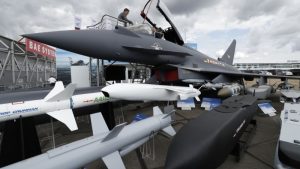dispatch from the Russian border
Stay informed with free updates
Simply sign up to the Life & Arts myFT Digest — delivered directly to your inbox.
SUMY
In July, I visit a special forces unit near Sumy in the north-east. A group of soldiers has returned from across the Russian border — wet, dirty, tired, yet satisfied. They review their GoPro and drone footage, read books, watch movies, eat and rest on couches, cleaning their weapons and chatting. I spend four days with them, watching them train and have fun by the nearby lake, joining in their volleyball games.
One day, during a game, we hear a distant but powerful noise. The servicemen take a quick glance up, and one of my teammates turns to me: “It’s Himars,” he says, referring to a rocket launcher used to strike Russian targets. “Come on, hit the ball!” A few days later, back in Kyiv, I discover that two of the guys I’d spent time with at the lake were killed on their next mission.

SUMY DRONE UNIT
At the top of a hill in a field of high fresh green wheat, a drone falls. It is not easy to find — the men have to use another drone to spot where it landed. These drones had been used a couple of days before, during the mission across the border. They imitate attacks to drive the Russian servicemen inside while sappers lay mines to cut off access to the main road.

KHARKIV CONTROL CENTRE
The Russian army occupied a piece of land in the north of the Kharkiv region in May. In the city of Kharkiv, there is an unremarkable building with shuttered windows. The entrance looks abandoned, but the door opens from inside when certain people want to enter. This is a base for the Khartia Brigade, a branch of the National Guard that was founded in Kharkiv in 2022. Inside, there is a drone workshop and an observation point to manage drones in the battlefield. Several large TV screens show around 20 video streams at the same time. There’s an active operation going on. Footage of the cratered soil being hit by thousands of projectiles moves slowly across the muted screens.

KHARKIV DRONE UNIT
The next day, late in the evening, I am taken by the large drones unit to where they are stationed. It is about 5km from the front line. We are meant to arrive and leave in the dark. The car looks like one from Mad Max, with steel sheets attached to it and several large radio-electronic warfare pylons on the roof. Because the front line is so near, the car speeds along the rough, narrow roads at more than 120kph, despite the darkness. At one point, we nearly crash into a tank. In the village, the guys set up antennas and a drone, then quickly move into a basement for launch. The Vampire drone is loud. Above us, the starry sky buzzes with different types of drones.

TSYRKUNY
In the middle of a hot day, we arrive at a sappers’ point, close to the front line. The sappers work with a huge range of ammunition, adapting them to attach to different types of drones. The ground is littered with explosive devices ready to be used. Some are homemade, from plastic bottles, some have been printed on a 3D printer. There are parts of an RPG-7 rocket launcher, some thermobaric vacuum bombs and other grenades. The sapper works carefully and confidently. He doesn’t talk much until I show him what I’ve drawn. Then he smiles.
Sergiy Maidukov’s work has appeared in the FT Magazine, as well as The New Yorker, The New York Times and The Washington Post. He was born in Donetsk, eastern Ukraine, which is currently occupied by Russia and its militant proxies. Maidukov has been working with servicemen to cover the conflict
Follow @FTMag to find out about our latest stories first and subscribe to our podcast Life and Art wherever you listen
#dispatch #Russian #border






